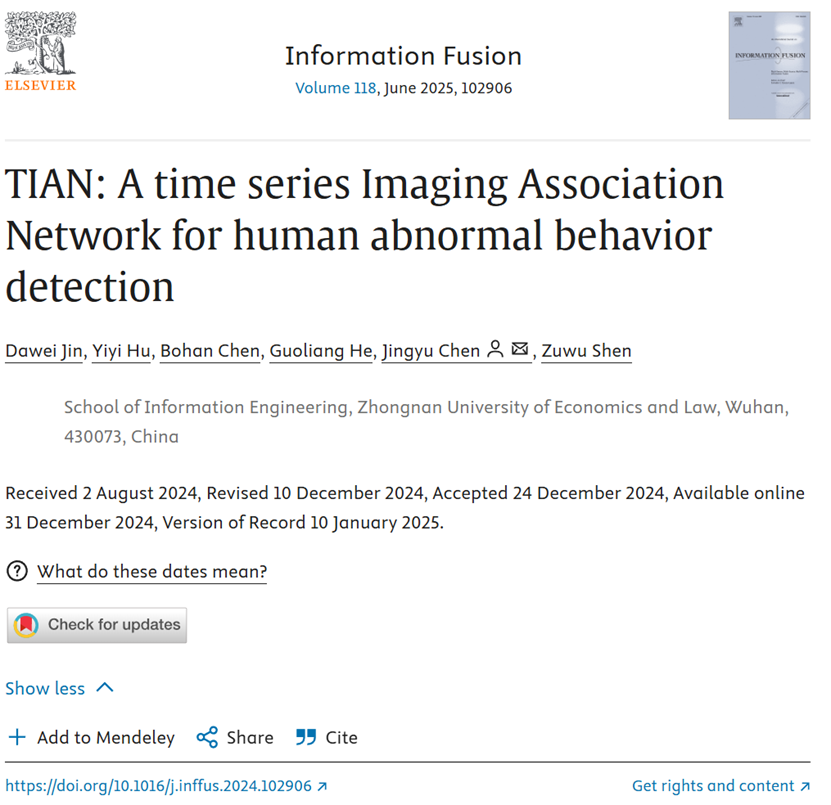Professor Dawei Jin, Co-Director of the Base, has his co-authored paper titled TIAN: A Time Series Imaging Association Network for Human Abnormal Behavior Detection published in Information Fusion—an interdisciplinary journal in the field of computer science.
As a primary platform for disseminating information on all aspects of research and development in information fusion, Information Fusion aims to showcase all advancements in the field of multi-sensor, multi-source, and multi-process information fusion within a single forum, thereby facilitating synergy among the numerous disciplines contributing to its development.
Abstract:
In smart healthcare, human activity recognition (HAR) is an effective technology that provides personalized treatment plans to patients. Specifically, HAR technology is used to quickly detect abnormal physical conditions in patients, thereby improving medical efficiency and service quality. With the growth of the Internet of Things and widespread adoption of wearable devices, human abnormal behavior detection technology based on multi-sensor time series has shown excellent application value. Although recent deep learning methods have shown great potential for anomaly detection, they still need to fully utilize information on behavioral differences across subjects. Meanwhile, cross-modal representation of most time series has demonstrated excellent performance, but few studies have considered both the internal evolutionary and periodic features of time-series. Addressing this research gap, this paper proposes TIAN, or Time-series Imaging Association Network, for anomaly detection in HAR. TIAN first fuses multiple time-series cross-modal feature representation methods to encode time-series into images, thereby better capturing rich time-series feature information. Furthermore, the critical innovation of TIAN is that it distinguishes habit noise across subjects and facilitates the learning of invariant features of various behavioral patterns. Experimental results on the WISDM, HARTH, and LRAD datasets demonstrate that TIAN performs well compared with existing baselines. Meanwhile, the ablation results on the WISDM dataset show that removing each component in the TIAN system consistently degrades the performance. In addition, TIAN is more robust to input noise compared to other baseline models on the HARTH dataset.
Keywords: Human activity recognition;Anomaly detection;Multi-sensor time series;Generative adversarial networks
Link: https://www.sciencedirect.com/science/article/pii/S1566253524006845

Teacher profile
Dawei Jin, Dean of the School of Information and Cyber Security Engineering at Zhongnan University of Economics and Law, Co-Director of Innovation And Talent Base For DIgital Technology And Finance, Director of the Institute of Artificial Intelligence and Law & Business, Wenlan Young Scholar, and Council Member of the External Relations Committee of the China Computer Federation (CCF). He has long been engaged in teaching information-related courses and conducting research on financial information engineering. He has presided over more than 10 projects, including the National Social Science Foundation of China (NSSFC) projects, Humanities and Social Sciences Research Projects of the Ministry of Education of China, National Postdoctoral Science Foundation of China projects, Research Projects of the Department of Education of Hubei Province, and Basic Scientific Research Funds for Central Universities. He has published more than 20 papers in authoritative journals such as SCI, SSCI, CSCD, and CSSCI.
